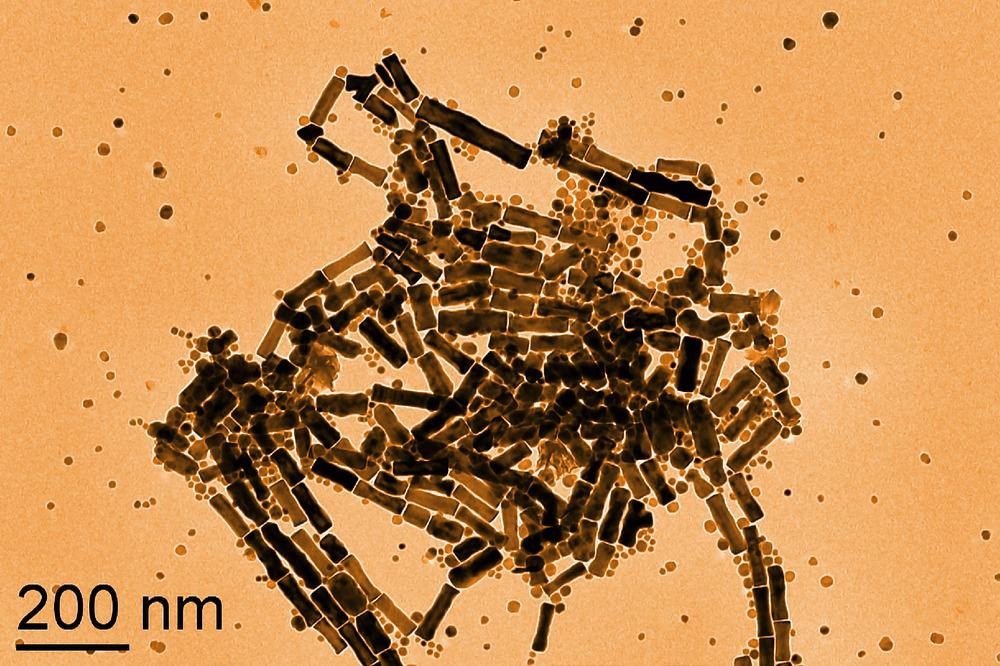An article available as a pre-proof in the journal Materials Chemistry and Physics delves into the production, structural, and optoelectronic characteristics of cobalt oxalate nanorods for utilization as photocatalysts and electrocatalysts.

Study: Solvent-assisted synthesis of CoC2O4 nanorods for enhanced charge transfer in dual catalytic activity: Photocatalysis and electrocatalytic oxygen evolution. Image Credit: Georgy Shafeev/Shutterstock.com
The Rise of Catalytic Nanotechnology
The advent of nanotechnology, as well as the fascinating optoelectronic capabilities of nanoparticles (NPs), has prompted scientists to create high functioning nanoparticles with customizable catalytic characteristics. These substances can capture optical energy and create electrons and holes, which may reunite based on their electrical arrangement.
Notable photocatalysts produced thus far mainly consist of nanomaterials of different chalcogenides, transition metallic oxides, and coordination compounds such as MoFs and poly-oxometallates.
All of these substances have morphological and optical features that are extensively adjustable. This has allowed scientists to correct for minor shortcomings in every substance by appropriately changing the structural or molecular properties.
The most frequent methods for improving catalysis effectiveness include nano-structuring, vacancy creation, and semiconductive composite fabrication.
Oxygen Evolution Reactions with Cobalt-Based Nanocatalysts
The water splitting process has gotten a lot of attention because it offers a closed loop of H2/O2 generation with no carbon release. This H2 and O2 fuel may then be turned into electricity in fuel cell technology, opening the path for long-term energy generation.
The primary goal of nanomaterial electrocatalysis for the oxygen evolution reaction (OER) is to reduce the overpotential for the intended process. These nanoscale catalysts may produce a variety of transitional stages with reduced activating energy thresholds.
This, combined with nanomaterials' innate capabilities to create the highest possible number of redox spots through molecular adsorption of H2 and H2O due to their large specific areas and pore sizes, has made it critical to develop nanocatalysts with appropriate structural and electrical characteristics.
Cobalt-based nanomaterials have been demonstrated to be the ideal option for OER catalysis amongst earth-abundant materials owing to their low cost, unique redox properties, and environmental friendliness.
To improve the electrochemical performance of CoOx-based nanomaterials, several morphological modeling procedures have been employed.
Studies on the production of cobalt oxalate nanorods have shown the ease of manufacturing techniques and morphological manipulation of anisotropic cobalt oxalate nanoparticles, which may be investigated further for improving electrocatalysis.
Why Use Metal Oxalates?
Metal oxalates generally offer fairly simple one-pot production techniques, good reversible specific capacities, and programmable architectures that allow for adjustment of their electrochemical characteristics as required. They are an intriguing class of substances that connect inorganic (metal cations) and organic components through strong interactions to create polymer chains.
Metal oxalates have a crystal morphology composed of MO6 octahedra generated by connections between metallic atoms and bidentate chelating oxalate molecules.
All of these octahedra are connected by corner-sharing oxygen atoms, resulting in a monoclinic unit cell. This is advantageous for smooth charge transport, which is a necessary condition for strong optoelectronic characteristics.
Key Findings of the Study
This study illustrates the twin catalytic characteristics of cobalt oxalate NPs and explores how structural tailoring may be used to improve their catalysis efficiency. Varying the solvents in the preparatory solutions resulted in the formation of cobalt oxalate nanorods of varying diameters.
In the produced specimens, the anisotropic nanorods were effectively modified to smaller nanorods with constant nanometric dimensions. CoXTHF specimens were noted to have greater crystallinity. In both specimens, a visible light-active small bandgap was discovered.
The strong quantum mechanics of the systems that constitute the CoO6 octahedra allow them to serve as good catalysis locations.
The high crystallinity CoX-THF specimens had better photocatalytic capabilities, with a smaller bandgap and lower PL reuniting intensity, than the larger nanorods in CoX-DMF. This is due to enhanced charge dynamics throughout the nanostructure as well as more properly formed lattice structures in the CoX-THF specimens.
The CoX-THF specimens also showed increased OER activity. This is due to the fact that there are more places for charge creation and ejection along with their crystalline frameworks. Thus, morphology modeling has been used effectively to improve the twofold catalytic performance of cobalt oxalate nanoparticles.
Reference
Basu, S. S., Rahut, S., Chinthala, C., and Bisht, A. S. (2022). Solvent-assisted synthesis of CoC2O4 nanorods for enhanced charge transfer in dual catalytic activity: Photocatalysis and electrocatalytic oxygen evolution. Materials Chemistry and Physics. Available at: https://www.sciencedirect.com/science/article/pii/S0254058422002541?via%3Dihub
Disclaimer: The views expressed here are those of the author expressed in their private capacity and do not necessarily represent the views of AZoM.com Limited T/A AZoNetwork the owner and operator of this website. This disclaimer forms part of the Terms and conditions of use of this website.